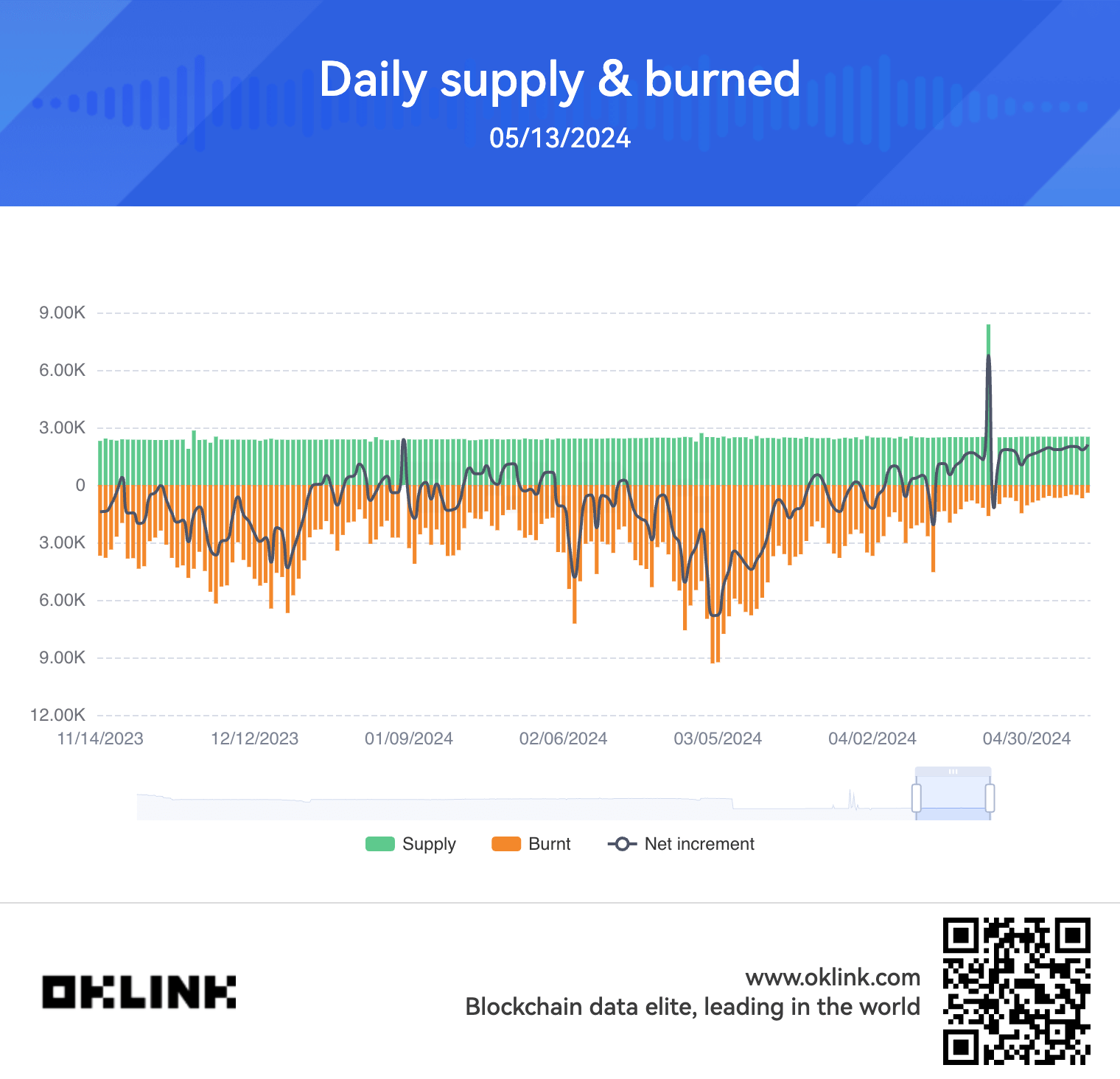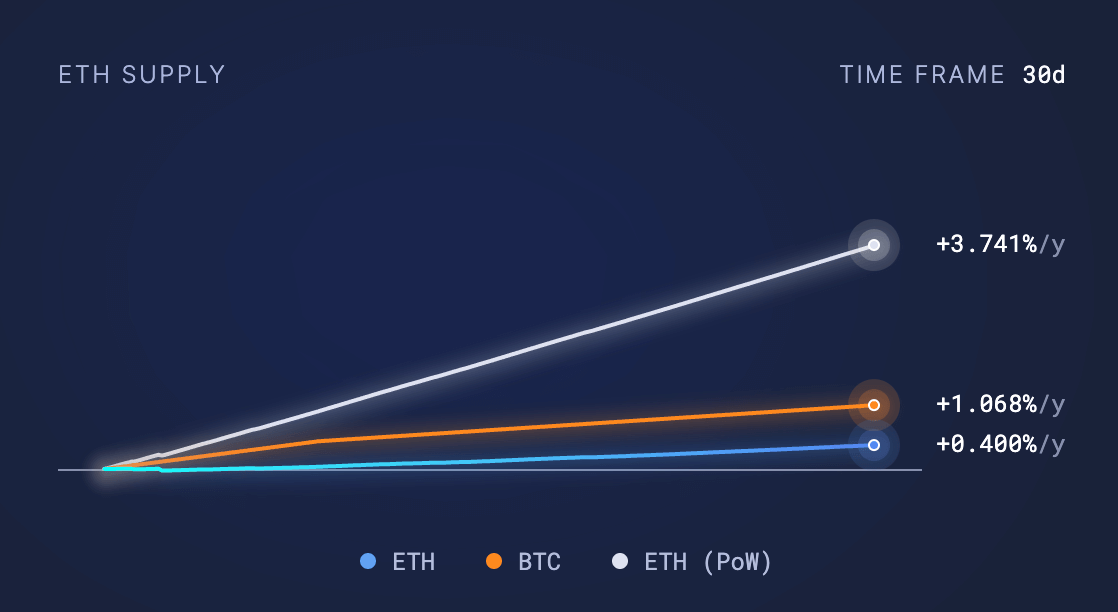Since Ethereum moved from proof-of-work to proof-of-stake in 2022, it has become a deflationary asset. The total circulating supply of Ethereum (ETH) currently stands at 120,105,358 ETH, representing a 415,680 ETH decrease from the supply levels observed before The Merge.
However, over the past 30 days, Ethereum’s supply dynamics have shifted, with 35,548.72 ETH being burned (removed from circulation) and 75,072.43 ETH being issued as block rewards to validators. The net result is a supply increase of 39,523.71 ETH during this period. Data from Ultrasound Money show that, based on the supply change over the past 30 days, Ethereum’s current annualized inflation rate is approximately 0.4%.
In comparison, Bitcoin’s inflation rate stands at 1.068%, while Ethereum’s Proof-of-Work (pre-merge) inflation rate would have been significantly higher at 3.74%. If the current 30-day rate persists, projections for the next year indicate that around 433,000 ETH will be burned, and 914,000 ETH will be issued, creating a net gain of 481,000 ETH.
Data from OKLink shows a continued decrease in ETH burned since March, when an average of around 6,000 ETH was burned daily. Since the start of May, only around 900 ETH has been burned daily, the lowest average levels since The Merge.


The recent Dencun upgrade on the Ethereum network has had a notable impact on the ecosystem. The upgrade has led to a decrease in layer-2 transaction fees and overall network activity. Consequently, this has seemingly resulted in a lower burn rate, pushing Ethereum’s supply back into an inflationary state.
Data from Etherscan and Ycharts shows that gas fees have also plummeted to around 5 gwei, the lowest on record.


Interestingly, Ethereum’s inflation rate has drawn closer to that of Bitcoin, especially in the aftermath of Bitcoin’s halving event last month. As per data from the past 7…
Click Here to Read the Full Original Article at Ethereum (ETH) News | CryptoSlate…
























